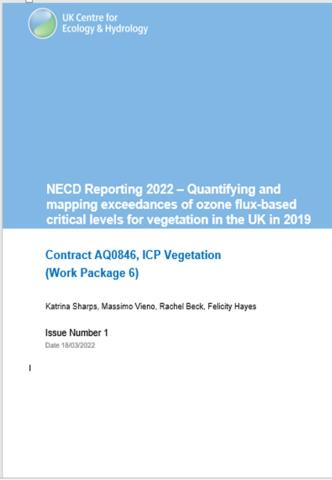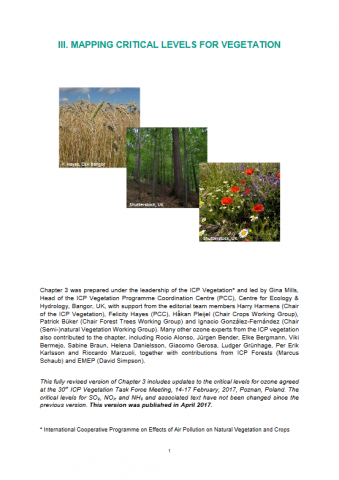Bibliography
.
2011. Nitrogen concentrations in mosses indicate the spatial distribution of atmospheric nitrogen deposition in Europe. Environmental Pollution. 159:2852-2860.
.
2015. Ozone and plants. Environmental Pollution. 202:215-216.
.
2016. Ozone impacts on vegetation in a nitrogen enriched and changing climate. Environmental Pollution. 208:898-908.
.
2018. Ozone pollution will compromise efforts to increase global wheat production.. Global Change Biology. 24:3560-3574.
.
2014. Relationship between site-specific nitrogen concentrations in mosses and measured wet bulk atmospheric nitrogen deposition across Europe. Environmental Pollution. 194:50-59.
.
2016. Spatially valid data of atmospheric deposition of heavy metals and nitrogen derived by moss surveys for pollution risk assessments of ecosystems (vol 23, pg 10457, 2016). Environmental Science and Pollution Research. 23:21123-21124.
.
2008. Temporal trends (1990-2000) in the concentration of cadmium, lead and mercury in mosses across Europe. Environmental Pollution. 151:368-376.
.
2007. Temporal trends in the concentration of arsenic, chromium, copper, iron, nickel, vanadium and zinc in mosses across Europe. Atmospheric Environment. 41:6673-6687.
.
2013. Terrestrial mosses as biomonitors of atmospheric POPs pollution: A review. Environmental Pollution. 173:245-254.
.
2018. Tropospheric Ozone Assessment Report: Present-day tropospheric ozone distribution and trends relevant to vegetation.. Elementa: Science of the Anthropocene. 6(1):47.
.
2015. Twenty Eight Years of Icp Vegetation: An Overview of Its Activities. Annali Di Botanica. 5:31-43.
.
2018. Wheat yield responses to stomatal uptake of ozone: Peak vs rising background ozone conditions.. Atmospheric Environment. 173:1-5.
 ]
] 
